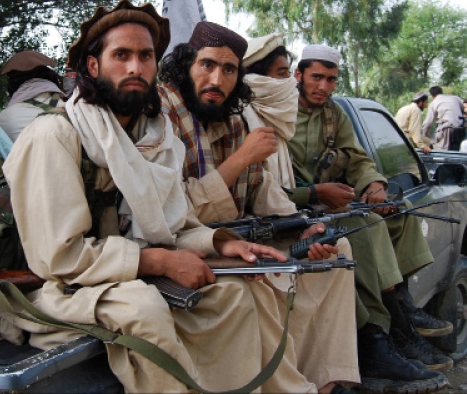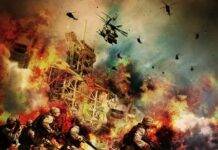“There are a lot of children in Afghanistan, but there is little childhood.” This is one of my choicest quotes from Khaled Hosseini’s popular novel The Kite Runner. Waking up to the scary news of Taliban storming into Afghanistan, I, like many others of my generation, could not take my mind off the tragically beautiful imagery of Afghanistan created by Hosseini. His words effortlessly yet heartbreakingly true, describe the apocalyptic situation of Afghanistan. I thought of Mirriam, thought of Laila, of Tariq and of Sohrab; all fictional characters of Hosseini’s books. But today they felt real, existent; probably actualized by the tragedy and ill fate befalling Afghanistan in reality, much like in their story.
The past days, for many of us, have been spent watching, listening and digesting the socio-political situation in Afghanistan, as Taliban regains control after twenty years. While it seems utterly shocking, it seems so scary that it becomes unreal to us. Us, blinded by the illusory denial of the answer to a dreaded question: What are the odds that someday we too will face a similar situation? We convince ourselves that it is all part of a horrid script being enacted far away in a parallel universe. This conviction is followed by a careful dissection of Afghanistan to draw stark dissimilarities between ‘us’ and ‘them’, followed by the conclusion that something like this would probably never happen to us, because of the obvious cultural, political and economic dissimilarities between ‘us’ and ‘them’. These facts are repeated till the cleavage between us and them increases, in absolute terms, to the extent of apathy and sordid indifference.
Many of us might recollect the tragic and tumultuous past Afghanistan has had to suffer. Primarily due to the power struggle between western supremist powers (USA and erstwhile USSR) and their effort to colonize and appropriate its people for their imperialist gains. Taliban emerged in Afghanistan in 1994 out of a civil war situation to gain control of the country post USSR’s withdrawal and subsequent collapse of government. Taliban deployed numerous members from the ‘mujahid’ fighters who were backed by USA to repel soviet forces in 1980s. Within a couple of years from its inception, Taliban gained control over most of the country enforcing an extremely strict and conservative interpretation of Sharia Law. They cracked down heavily on anything they believed to be remotely associated with or representing western culture, branding it as un-Islamic.
Women, youth and children became prime casualties of their regime.Women were denied basic human rights, their education curbed, strict dress codes were implanted for men and women and a blanket ban on performing arts and entertainment were some of the many primordial ways in which they maintained control over the masses. However, Taliban melted away between 2001-2003 when NATO forces, led by USA, swept into Kabul as a consequence of 9/11 terror attacks on USA. Today, as we speak, Taliban marches into Afghanistan, city after city, hamlet after hamlet, un tethered and bolstered by the withdrawal of US troops. While it is true that withdrawal of US troops was imminent, the people of Afghanistan seemed to have been taken by shock primarily due to an ambient denial that America would not quit the scene, without cleaning a mess it was largely responsible for. USA did however, evacuate its forces, leaving behind a legacy of war, strife, unrest, hopelessness, resignation, betrayal and a belligerent Taliban to be tamed by the people of Afghanistan.
Given this situation, we should probably wonder where the rest of us as, citizens of this world, figure in this narrative? The answer might be found in our reading and interpretation of the concept of Sociological Imagination. Sociological imagination refers to insight offered by the discipline of Sociology into lived realities of people. The term was coined by C.W. Mills in 1959 and has since inspired numerous sociologists to not only test it empirically but also expand on it. It is a critical quality of the minds of people in general and not just social theorists. Inculcating sociological imagination enables the individual to develop a deeper understanding of how seemingly personal situations may be associated with the wider society in one way or another. In the words of Mills himself, it is “the awareness of the relationship between personal experiences and the wider society”. It encourages investigation into the interconnectedness of history and biography. Through sociological imagination we can surpass common sense notions of the whatever is happening around us and interrogate its cultural and historical foundation and then arrive at nuanced and informed opinions. The promise of sociological imagination primarily is to banish the sense of disconnectedness individuals may feel with something that happens at distant structural levels. The disconnectedness often misguides them towards thinking ‘this does not concern me’. Its promise is also to cure apathetic lull that tends to silence masses in the face of atrocities. One example of lack of sociological imagination, oft cited and studied by theorists is that of the holocaust. The holocaust was based on the principal of absolute power. Absolute power backed the ideology that separated, segregated and systematically murdered some six million Jews around Europe. More appalling than these statistics is the fact the this was ‘allowed’ to transpire for long before people decided to question it, raise their voices in dissent and finally act on it. Before the overthrow of the Nazi regime, there was a prolonged and conspicuous silence on the behest of many countries. It resulted in one of the most shameful episodes of human history.
Today, when we look at Afghanistan, how different is the situation really? The treatment being meted out to the people there is not only appalling, it is unacceptable. “What is happening in Afghanistan today is going to put this country two hundred years back”. These are the words of a very agitated Mehbooba Seraj, founder of Afghan’s Women Network. Her fear is not baseless. In the past three months alone 900000 people have been displaced. It must be kept in mind that these are not normal times. The world is still reeling under the crisis of a pandemic and Afghanistan is no exception. This makes the plight of displaced Afghans even severe. News agencies have reported that Taliban leaders in certain provinces issued orders to local religious leaders to provide them with a list of girls over the age of 15 and widows under the age of 45 for “marriage” with Taliban fighters. It’s not known whether these orders have been complied. Taliban does not intend to allow girls over the age of twelve to be educated, it seeks to ban women from employment and sell them as slaves in an effort to attract more men towards their organization. They effectively seek to reduce the existence of women for gratification of Taliban’s mujahids’ sexual needs. Children are already dropping out from schools due to the atmosphere of terror. It is safe to say, Afghanistan stands on the brink of one of the worst humanitarian crises this world has seen in decades. It is only a matter of time before the nation collapses into obscurity. Yet, there is not one nation extending support to the innocent people of Afghanistan; mostly women and children. USA, a direct stakeholder for over two decades, hides behind grand bureaucratic jargons explaining its reasons for withdrawal; the rest of the world watches from a distance.
How we handle the catastrophe in Afghanistan today will bear testimony to what we as a species-being learnt from our past mistakes. The idea is to take lessons from history, link it with present times and dismember each thread woven together and served to us as convenient and hegemonic social reality. This will reveal the various standpoints, ideologies and perspectives about all that has transpired and will also reveal biases, prejudices that must be discarded. It will reveal the reason as to why we must act and soon. It will then also bridge the gap between ‘us’ and ‘them’, converting their trauma into shared trauma, their emancipation into collective emancipation. Yes, sociological imagination exists at the level of mind. At least that is where it starts. While it is evident, that what is needed at present is more than words and thought, we need action in aide of our neighbors. But actions (praxis) emanate from thought and our mind is the bedrock of thought.Which is why, sociological imagination if not enough, is indispensable in today’s time.
Bhavya Kumar hails from Lucknow. She is a doctoral research scholar at the Centre for Studies in Sociology of Education at Tata Institute of Social Sciences, Mumbai.













